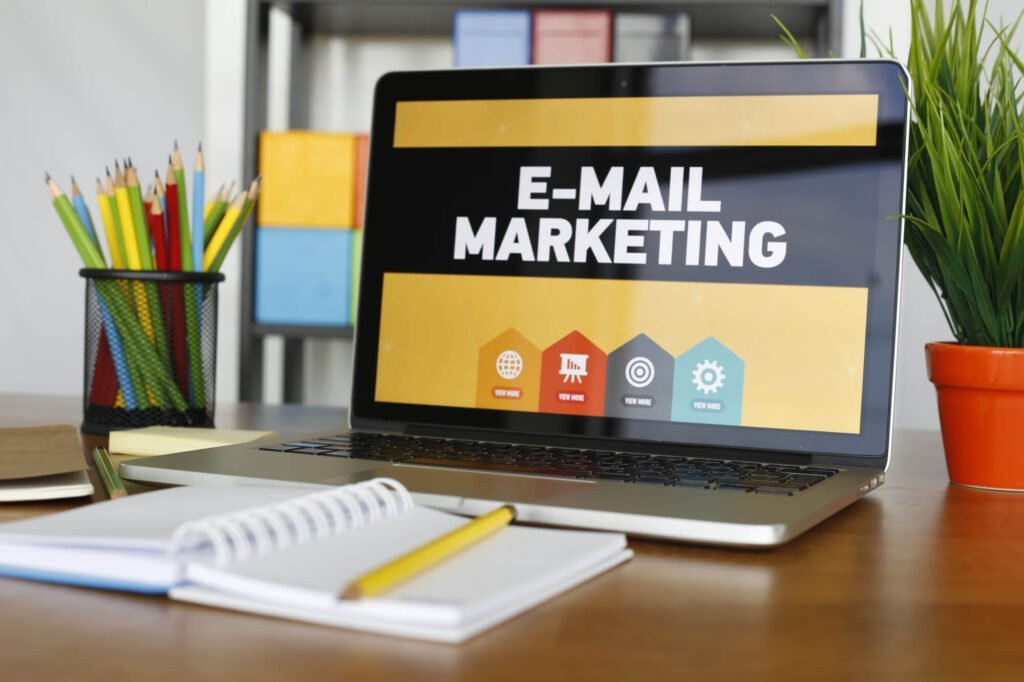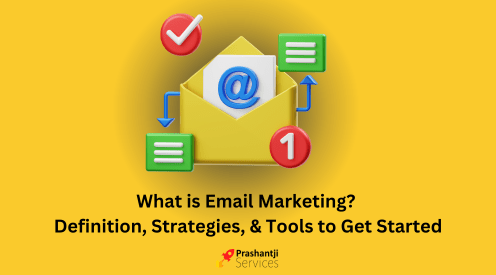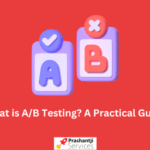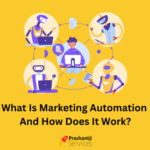What is Email Marketing? Definition, Strategies, & Tools to Get Started
By the end of this guide, you’ll have a solid understanding of email marketing and the know-how to launch an effective marketing strategy for your business.
Picture this: you’re sitting down at your computer, and your inbox pings with a message. It’s not just any message; it’s an email from your favorite online store, showcasing their latest products and offering you an exclusive discount. That, my friend, is email marketing in action. But what exactly is it?
Email marketing is a form of direct marketing that utilizes electronic mail as a means of communicating commercial or fundraising messages to an audience. While every email sent to a potential or current customer could be considered email marketing, the term is typically used to refer to:
- Sending emails to enhance the relationship between a merchant and its current or previous customers, fostering customer loyalty and repeat business.
- Sending emails to acquire new customers or encourage current ones to make immediate purchases.
- Sending email messages to announce products or services.
What is Email Marketing?
Email marketing is a digital marketing strategy that leverages email to promote and sell products or services. It can be used to build customer relationships, cultivate loyalty, and boost sales. Different types of email marketing include:
- Newsletters: These contain timely information about a company or industry and are typically sent regularly (monthly, quarterly). Newsletters build customer relationships by providing valuable information and can promote sales and special offers.
- Transactional Emails: These are sent in response to actions taken by recipients, like making a purchase or signing up for a service. Transactional emails provide information related to the transaction, such as confirmation numbers or receipts.
- Marketing Emails: These promote a product or service. They can be sent to specific groups based on interests or demographics and may include special offers, coupons, or promotional material.
Email marketing is effective because it allows you to target specific messages to your audience, is cost-effective, and easy to set up.
Why is Email Marketing Important?
Email marketing holds several key advantages:
- Effective Audience Reach: It’s an efficient way to reach your target audience with personalized messages, leading to higher conversion rates.
- Relationship Building: It helps build and nurture customer relationships by keeping them informed about your latest products and offerings.
- Cost-Effective: Compared to other marketing channels, email marketing is cost-effective and provides a high return on investment.
Benefits of Email Marketing

Here’s why you should love email marketing as much as we do:
- Wide Audience Reach: Think about all the people in the world. With email marketing, businesses can reach a huge chunk of them quickly and easily.
- Detailed Analytics: Businesses can track the success of their emails like detectives. They know who opened their emails, what caught your eye, and what made you click. This helps them make their emails even more interesting for you.
- Audience Segmentation: Imagine if your favorite store knew you love sneakers and always send you the latest sneaker releases. That’s what audience segmentation does; it tailors emails just for you.
- Automation: Businesses can set emails on autopilot. They can plan them in advance, so you receive them at the perfect time.
- Personalization: It’s like getting a handwritten note instead of a generic letter. Email marketing allows businesses to make you feel special by personalizing your messages.
Strategies for Effective Email Marketing
To execute an effective email marketing campaign, consider these strategies:
- Define your target audience and objectives: Understand who you are targeting and your campaign goals.
- Segment your list: Divide subscribers into groups based on shared characteristics for more targeted emails.
- Create compelling content: Provide value to readers while promoting your product or service, maintaining a friendly tone to build trust.
- Use a strong call-to-action (CTA): Include a clear and enticing CTA in your emails.
Tools for Executing an Email Marketing Campaign
Tools for email marketing include:
- Email Marketing Software: Used to create and send newsletters, email templates, and other email content.
- Marketing Automation Software: Automates tasks like segmentation, personalization, and scheduling.
Best Practices for Creating & Sending Emails
Follow these best practices:
- Keep your list clean and up-to-date: Remove inactive subscribers regularly.
- Personalize your emails: Include the recipient’s name when possible.
- Write compelling content: Provide interesting and informative content.
- Send at the right time: Test different send times to maximize engagement.
- Monitor your results: Use analytics tools to track open rates, click-through rates, and more.
Conclusion
Email marketing is a powerful, cost-effective digital marketing strategy for connecting with customers, building relationships, and boosting sales. By following best practices and leveraging email marketing tools, you can harness its potential to grow your business and achieve your marketing goals. Remember that success in email marketing requires ongoing planning, execution, analysis, and optimization. With these principles in mind, you can create engaging email campaigns that resonate with your audience and drive results. Happy emailing!
FAQ
Q1: What is the difference between email marketing and spam?
A1: Email marketing is about sending relevant and valuable content to people who have willingly subscribed to receive emails from a business. Spam, on the other hand, involves sending unsolicited and often irrelevant emails to a large number of recipients without their consent. In short, email marketing respects recipients’ preferences, while spam ignores them.
Q2: Is email marketing still effective in the age of social media?
A2: Absolutely! Email marketing remains one of the most effective digital marketing strategies. While social media has its place, email allows businesses to have a direct, personalized, and cost-effective way to communicate with their audience. It’s like having a one-on-one conversation with your subscribers.
Q3: How often should I send marketing emails?
A3: The ideal email frequency varies depending on your audience and content. For newsletters, a regular schedule (e.g., weekly, bi-weekly, or monthly) is common. Promotional emails should be sent when you have something valuable to offer. The key is finding a balance where you stay top-of-mind without overwhelming your subscribers.
Q4: What’s the best time to send marketing emails?
A4: The best time can vary based on your target audience. Generally, research suggests that Tuesday, Wednesday, and Thursday mornings tend to be favorable. However, it’s crucial to conduct A/B testing to determine when your specific audience is most active and engaged.
Q5: How can I grow my email subscriber list?
A5: Growing your subscriber list is essential. You can do this by:
- Using sign-up forms: Place them on your website, social media, and in-store if applicable.
- Offering incentives: Provide exclusive discounts, content, or giveaways to entice people to subscribe.
- Running contests: Encourage current subscribers to refer friends in exchange for rewards.
- Networking: Connect with others in your industry for cross-promotions and list sharing (only with consent).
- Creating quality content: Regularly send valuable content that keeps subscribers engaged.
Q6: How can I measure the success of my email marketing campaigns?
A6: You can measure email campaign success through key metrics:
- Open Rate: Shows how many recipients opened your email.
- Click-Through Rate (CTR): Indicates the percentage of people who clicked on links in your email.
- Conversion Rate: Reveals how many recipients took the desired action (e.g., made a purchase) after clicking.
- Bounce Rate: Shows the percentage of emails that weren’t delivered.
- Unsubscribe Rate: Tracks how many people opted out of your emails.
Analyzing these metrics helps you understand what’s working and what needs improvement in your campaigns.
Q7: What are some common email marketing mistakes to avoid?
A7: Avoid these pitfalls:
- Ignoring permission: Always get consent before adding someone to your list.
- Neglecting mobile optimization: Ensure your emails look great on smartphones.
- Overloading with content: Keep emails concise and focused.
- Being too salesy: Balance promotions with valuable, non-promotional content.
- Forgetting to test: Always test your emails to catch formatting issues or broken links.
Q8: Can I automate my email marketing campaigns?
A8: Yes, you can! Email marketing automation tools allow you to set up workflows, schedule emails, segment your audience, and personalize messages based on user behavior. Automation saves time and ensures that the right message reaches the right person at the right time.
Q9: How can I ensure my emails land in the recipient’s inbox and not in the spam folder?
A9: To avoid the dreaded spam folder:
- Use double opt-ins: Require subscribers to confirm their subscription.
- Authenticate your domain: Set up DomainKeys Identified Mail (DKIM) and Sender Policy Framework (SPF) records.
- Regularly clean your list: Remove inactive or bounced email addresses.
- Avoid spammy content: Steer clear of excessive capitalization, multiple exclamation points, and deceptive subject lines.
Q10: What’s the future of email marketing?
A10: The future of email marketing looks promising. It will continue to evolve with advancements in personalization, AI-driven content recommendations, interactive emails, and increased focus on privacy and data protection. Email marketing will remain a cornerstone of digital communication, helping businesses build meaningful connections with their audience.
Remember, successful email marketing is not just about sending messages; it’s about building relationships, offering value, and respecting your subscribers’ preferences. If you have more questions or need further guidance, feel free to reach out!








